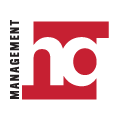
Author Janne Flisrand, Network Weaver
In 2014, charged with developing an emerging network, I reached out to Management HQ.
Networks vs. Organizations
Networks focus on a shared, complex goal. It could be increasing awareness of and the market for a specific industry. In this case, the network worked to expand healthy, efficient housing for all by leveraging the relationships between individuals, sectors, and policies. “NEWHAB” – the Network for Energy, Water and Health in Affordable Buildings.
Four principles of networks (from Jane Wei Skillern) highlight the difference in approach:
- Trust not control
- Humility not brand
- Node not hub
- Mission not organization
These principles require shifts in how we approach our work.
- From hierarchy to peers
- From conformity to appreciation of difference
- From control to a web of support
Network leadership focuses on facilitating, connecting, coordinating, and supporting rather than deciding and directing. Leadership is a shared activity, and effective network leaders motivate people by tapping into their passions and self-interest. They also offer:
- Opportunities for leadership
- Space to improve standing of field
- Learning
- Networking, fostering real relationships that advance both the field and careers.
Learn more here.
Networks with MHQ
I reached out to MHQ because networks have key similarities to membership associations. Many organizations employ network members across the country. There is no supervisory authority over members. It’s critical to work in a way that benefits members as much as the the network.
The skills critical to coordinating and engaging network members is like that for associations. MHQ was eager to learn more about network approaches. It was an ideal partnership for us.
The MHQ team, including Kathy Choh who served as our network coordinator, erased our logistical challenges. Their work gave members time to focus on the work that needed subject-matter expertise and most benefitted members’ organizations and individual goals. MHQ support improved our transparency and included adding a newsletter and a members-only knowledge management website.
Since 2014, network membership and member engagement grew more than 15% per quarter [See “NEWHAB Growth” graphic, below]. Early- and mid-career members found opportunities to show off their leadership skills and build relationships with late-career members. Late-career members were thankful to hand off work and to mentor emerging leaders.

The network took time to learn as we went. We shared our learning broadly, accelerating progress in all the groups. We designed work groups with short, iterative cycles so people could switch between groups. That led to doubling in the number and strength of relationships between network members over one year. Most importantly, we made significant progress towards our goal.
First Steps
If you want to tap into the self-fueled engine of a network approach for your association, check out some network design tips on my blog. I’m supporting other networks to help them achieve the similar outcomes. It’s an investment in a new way of working that once it’s taken off, breeds engagement and its own leadership while speeding progress towards outcomes.
About the Author
Janne Flisrand, Network Weaver: When people want to work together and collaborate, but aren’t sure how to best use everyone’s interests and abilities, Janne can help. She approaches the world – and her work – with a broad, open-minded curiosity. She sees the implications of ideas, connections between abstractions and specifics, and applies concepts to real problems. At the end of any project, you will have practical tools to get your work done and more people committed to accomplishing the same goals. Contact Janne at janne@flisrand.com.




